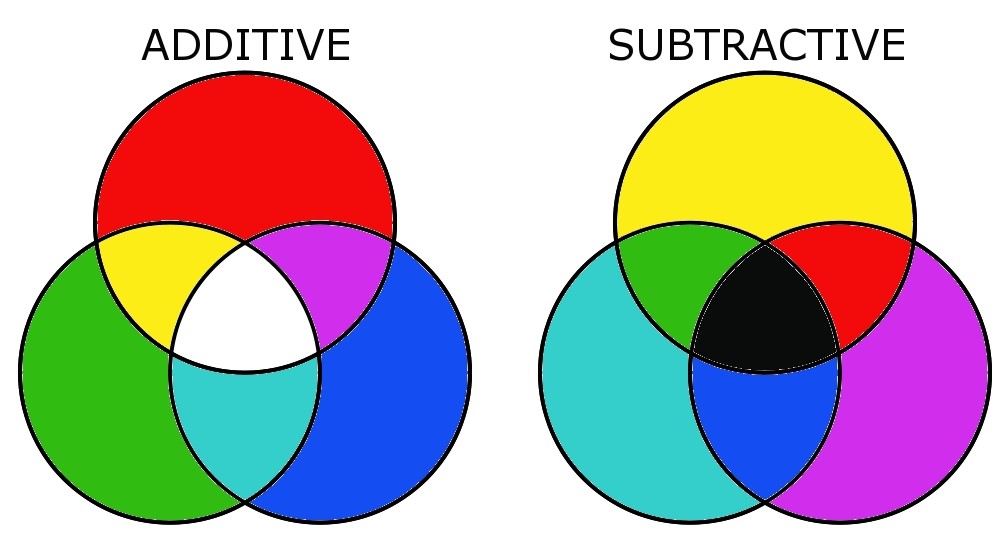Process Printing – Creating the color gamut from the subtractive model

Process printing is the reproduction of the color gamut through a few ink colors. In flexography, the common process color used are Cyan, Magenta, Yellow and Key or black. It is commonly abbreviated as CMYK. The four colors are printed onto the substrate as dots with varying size, shape and spacing. The four layers of CMYK dots are combined to form an optical illusion that these tiny dots are blended into smooth tones by the human eye. This process is known as the halftone process.
The CMYK process printing is a subtractive model. To gain more understanding of the subtractive model first let's look at the additive model. The human eye can perceive light at a particular wavelength on the spectrum. We call this visible wavelength range the visible spectrum. The light on the visible spectrum can be received by the photoreceptor cells or cones of the human eye. Received as three primary colors which are blue, green, and red. All colors perceived is a mixture of these three primary colors. To understand the additive model. Imagine yourself in a black room with no light other than a projector. When the projector projects red light, we see red, when the projector projects blue light, we see blue, and the same with green. However, when we start to mix the colors together by turning on red and green light at the same time, we see yellow instead. When we turn on blue and green light at the same time, we see cyan. When we turn on green and red light, we see magenta. When all blue, red and yellow are turned on, we see white. However, when we print, we cannot print with light, we use printing inks. Therefore, we are unable to deliver red, blue and green directly to the eyes, instead, we will need to deliver red, blue, and green indirectly through the subtractive model.
To form a subtractive model, we use cyan, magenta, and yellow ink. These inks are manufactured to absorb 1/3 of the visible color wavelength and reflect 2/3 of the visible color wavelength. Now let say we want the eyes the receive green. To do this we can first print yellow on the paper. Yellow will absorb blue and reflects red and green. Then we add Cyan that will absorb red and reflect blue and green. With Yellow and Cyan both printed onto the white substrate, blue and red will both be absorbed, leaving green to be reflected. As result, delivering the green wavelength for the human eyes to perceive.
In conclusion, the addictive model adds different wavelengths to produce the final perceived colors. The subtractive model absorbs or takes away wavelength to produce the final perceived colors.
Relevant Reading
How to communicate in color?

Article by Daywey Chen, KYMC


























